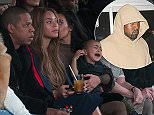Who's brainier than a toddler then? Astonishing new evidence shows parrots are brighter than children

Who's a clever boy then? Researchers have shown African Grey parrots are cleverer than toddlers
As the colonel’s wife meandered across the sitting room of our Army bungalow in Nigeria, our African Grey parrot watched her beadily.
The woman came to a halt in front of Polly’s cage, and Polly, tilting her head to one side, looked up and — in fine imitation of my mother’s voice — said: ‘Hello.’
Our visitor’s face lit up with an amused smile, and she answered in a clipped, well-educated voice: ‘Well, hello. What a charming bird we have here.’
But that smile evaporated in an instant when Polly replied: ‘You’ve got droopy drawers,’ followed by a dirty cackle.
Now, I wouldn’t go so far as to say that our African Grey was intelligent enough to know that the Colonel’s wife did indeed have loose underwear, but over the next 23 years there were many occasions when Polly exhibited seemingly uncanny intelligence, wit and verbal dexterity.
So it comes as no surprise to me that a new study by researchers at the University of Vienna has shown that parrots such as our Polly can outsmart two-year-olds.
The team of researchers took as their subjects six African Greys housed at a parrot rescue centre. In a series of tests, the birds were required to choose between two closed boxes. One held a piece of walnut that rattled when shaken. The other was an empty container that made no noise when picked up.
All six parrots worked out there was food in the containers that rattled. Clever Pollys.
But even more impressive, those parrots quickly worked out that if a container was shaken and made no noise, the portion of walnut must be in the other box.
In other words, they reasoned that if there was no rattling, there was no food.
Even two-year-old children would find that difficult to do. A toddler would struggle to understand whether shaking and noise related to the presence or absence of a reward.
I can imagine Polly’s reaction if we were to set up a similar test. ‘What are you up to?’ I can almost hear her say as she picks up each box in turn, rolling her tongue delicately over its surface.
But unlike the well-behaved parrots in the Vienna trial, the impatient Polly would no doubt have used her beak to crush the box and free the treat inside.
When we first acquired Polly, a little over a year after we’d moved on to the Army base in Nigeria where my father was stationed, I witnessed the power in those mandibles. They could splinter a piece of teak as if it were a matchbox.
On many occasions in Polly’s earliest days with us, she would lunge at my father whenever he attempted to feed and water her. He’d walk around for days afterwards with bandaged fingers.
‘Drat,’ he’d swear when bitten.
‘Drat,’ Polly would echo with a nod of her head.

Astoundingly clever: Alex the African Grey
For many years, scientists have tried to understand how African Greys like Polly can pick up a vocabulary (not all of it bad), and whether they can be taught to understand meanings as well as sounds.
Irene Pepperberg, a comparative psychologist at Harvard University, worked extensively with African Greys, and claimed they could understand colours, materials, numbers and shapes, and — almost unbelievably — could name them correctly when prompted.
She said she was able to ‘interview’ her parrots about what they saw.
Having shown one African Grey an image of a square that was partially obscured by an overlapping circle, she would ask: ‘What shape?’
If the parrot replied ‘Corner’, she would ask: ‘How many corners?’ According to Pepperberg, the parrot was then alert enough to reply ‘Four’.
Her experiment supposedly showed that the parrot was able to identify the shape as a square even though part of it was hidden by a circle.
Astoundingly clever stuff.
Another of her parrots, Griffin, could stack different-sized bottle-caps in the right order. This type of behaviour was once thought to be exclusive to humans, great apes and monkeys.
For many years Pepperberg worked with an African Grey called Alex who, with her help, learned the alphabet, had a vocabulary of 150 words, could recognise and name 50 objects and count up to seven.
But Alex couldn’t hold a candle to a parrot called Prudle.
Prudle was an African Grey who earned a place in the Guinness Book of Records for knowing more than 800 words.
I once had the privilege of looking after him when his owner went on holiday for a week. The stubborn blighter refused to utter a single word the whole time he was with us, despite me prattling on to him hour after hour, day in, day out.
On the Friday that his owner was due to collect him, I let him out of his cage for a bit and continued to chatter away, telling him he was no doubt pleased to be going home.
At this point, he jerked his head to one side, gave me a critical look and said: ‘For Christ’s sake, shut up!’
The question that preoccupies pet owners and scientists alike is whether African Greys just mimic sounds or, as Pepperberg claims, they are capable of associating human words with their meanings.
Many people dispute their ability to do this, but my experience with Prudle and Polly have convinced me that these birds understand the words they use perfectly well.
One blazing June day in Nigeria, when Polly was sunbathing on the patio on her perch, I decided it might be a good time to give her a shower. My bright idea was to turn the garden sprinkler on and direct a gentle spray over her.
Polly watched intently as I strode across the lawn to the tap that the lawn sprinkler was attached to.
As I reached out to turn the tap on, she fluttered down from her stand and, with feathers raised, raced across the lawn towards me, a furious ball of grey, screeching: ‘Stop it, Malcolm. Stop it!’
She had worked out exactly what I intended to do and wasn’t about to let me get away with it.
I may have had my trick foiled but I was impressed by Polly’s display of intelligence and her mastery of the English language. She was put out. Peeved. And definitely using the right words in the right context.
Such feats of brain power are remarkable when you consider that the brains of African Greys are only the size of walnuts. No bigger than the pieces in the containers in the Vienna trial.
Malcolm D. Welshman is a vet and the author of Pets on Parade, published by John Blake Publishing at £7.99. Kindle version 99p.
-
 The View mock Miss Colorado's nursing monologue
The View mock Miss Colorado's nursing monologue
-
 Crazy woman blocks parking space with her body
Crazy woman blocks parking space with her body
-
 GRAPHIC CONTENT: Horrific assault filmed at Baltimore school
GRAPHIC CONTENT: Horrific assault filmed at Baltimore school
-
 Apology from The View over Miss Colorado monologue
Apology from The View over Miss Colorado monologue
-
 Prince Harry stars in Rugby World Cup 2015 opening film
Prince Harry stars in Rugby World Cup 2015 opening film
-
 Video posted to Facebook in 2014 shows Bella's birthday
Video posted to Facebook in 2014 shows Bella's birthday
-
 Do NOT mess with this turtle! Snapping turtle in scary...
Do NOT mess with this turtle! Snapping turtle in scary...
-
 Furious Qatari drag racer confronted by videographer
Furious Qatari drag racer confronted by videographer
-
 The world's scariest clowns have been terrifying people...
The world's scariest clowns have been terrifying people...
-
 Mysterious 'End of Times' cloud spotted in Costa Rica
Mysterious 'End of Times' cloud spotted in Costa Rica
-
 Jeb Bush stands up on tiptoes for CNN Debate photo
Jeb Bush stands up on tiptoes for CNN Debate photo
-
 Inspiring toddler takes first steps with her new prosthetic...
Inspiring toddler takes first steps with her new prosthetic...
-
 Baby Doe's mom and her boyfriend in custody after Boston...
Baby Doe's mom and her boyfriend in custody after Boston...
-
 In America's most expensive city THIS is what $350K buys you...
In America's most expensive city THIS is what $350K buys you...
-
 The View loses two major advertisers after mocking nurse...
The View loses two major advertisers after mocking nurse...
-
 EXCLUSIVE PICTURES: Inside the life of the gangster being...
EXCLUSIVE PICTURES: Inside the life of the gangster being...
-
 Woman vs SUV: Parking space hogger tries blocking the...
Woman vs SUV: Parking space hogger tries blocking the...
-
 'That's not a real profession. They want to be doctors':...
'That's not a real profession. They want to be doctors':...
-
 'We can renegotiate if you decide you would rather be my...
'We can renegotiate if you decide you would rather be my...
-
 Pictured: The seven hikers swept to their deaths in Utah...
Pictured: The seven hikers swept to their deaths in Utah...
-
 Qatari Sheikh linked to Beverly Hills street racing leaves...
Qatari Sheikh linked to Beverly Hills street racing leaves...
-
 Pictured: Harry's late-night dash from 31st birthday bash...
Pictured: Harry's late-night dash from 31st birthday bash...
-
 EXCLUSIVE: It's the Love Boat! Rosie O'Donnell and Tatum...
EXCLUSIVE: It's the Love Boat! Rosie O'Donnell and Tatum...
-
 Family's bittersweet joy after daughter's phone full of...
Family's bittersweet joy after daughter's phone full of...





















































































































































































































































































































